Growing eustoma (lisianthus) from seeds: sowing dates for seedlings and rules for growing at home
The tender beauty eustoma has recently become a dear guest in the garden, as well as on the windowsill. Such a rare name for a flower is translated from Greek as "beautiful mouth" (from "eu" and "stoma"), and in a more artistic interpretation it can be called "beautifully speaking." They also call eustoma irish rose (due to the appearance of buds that have not yet opened), but in general its botanical name lisianthus.
In order to admire a lush flower for as long as possible, you need to delve into the intricacies of its cultivation from seeds and the subsequent care of the seedlings. We will talk about all this (about sowing eustoma seeds for seedlings, as well as about further rules for care and cultivation) in our article.
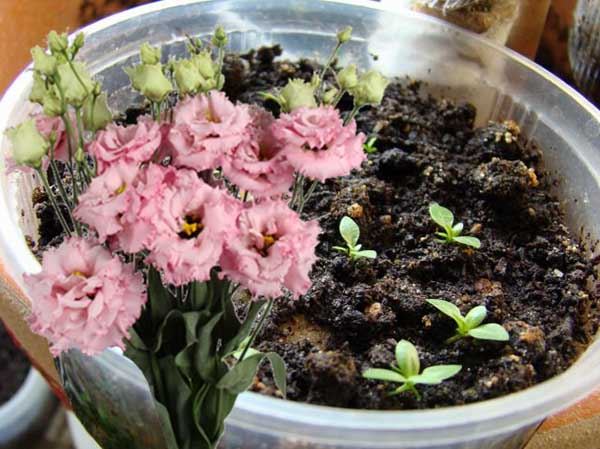
Note! It should be said right away that growing eustoma is a long business, the plant itself is capricious. However, if you do everything right, then the result will more than surprise you, and the expectations will come true. But only if all growing conditions are met.
This does not mean at all that it is better for novice growers not to take up Lisianthus. And yet, it is worthwhile to really weigh your strengths and capabilities, so as not to waste your precious time in vain.After all, cultivation is not as difficult (in terms of technique) as it is very long and tedious.
Content
- 1 Varieties of eustoma and popular varieties
- 2 When to sow eustoma for seedlings: optimal timing
- 3 How to sow eustoma for seedlings: step by step instructions
- 4 How to care for eustoma seedlings after sowing: maintenance conditions and care rules
- 5 When and how to plant eustoma seedlings in open ground on a flower bed
Varieties of eustoma and popular varieties
As a rule, 3 types of eustoma are distinguished, but only 2 are used for cultivation. For planting in the open field, take large-flowered eustoma (Eustoma grandiflorum), and for indoor growing in pots - eustomaRussell (Eustoma russellianum).
Also still exists eustoma small(Eustoma exaltatum).
And sometimes Russell's large-flowered and eustoma are combined into one species. In addition, the large-flowered variety, in general, is also suitable for indoor cultivation, since it is all the same undersized (dwarf) varieties.
By the way! Despite the fact that eustoma is a perennial plant, in a flower bed it is grown as an annualsince in the conditions, for example, of the Middle zone (Moscow region), it does not survive the winter. And here as home potting culture it is quite possible to plant it like a perennial.
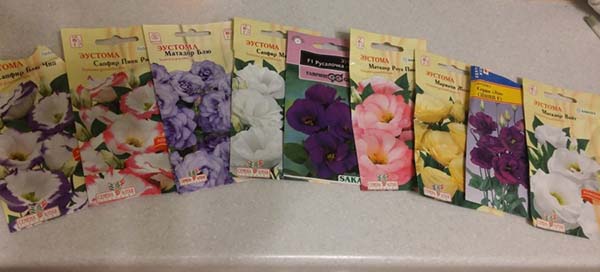
As for the varieties, the most popular are the series:
- Echo (Champagne, Blue, White);
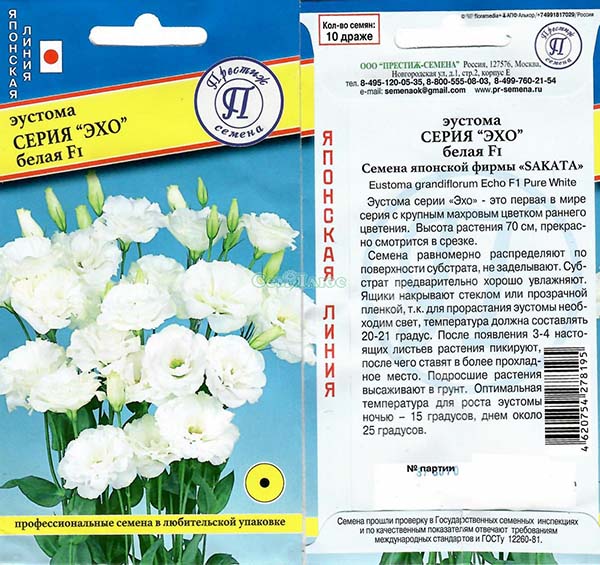
- Flamenco (Pink, Lime, Blue).
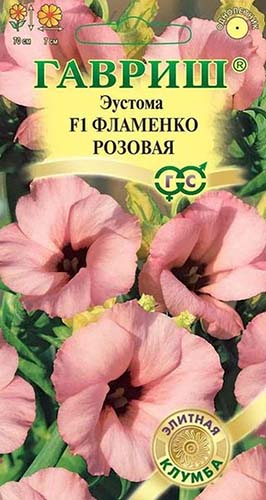
Advice! For the Central strip (Moscow region), North-West (Leningrad region), it is better to choose the earliest varieties, otherwise you simply will not wait for flowering or it will be short-lived. As a rule, such varieties of eustoma are not very tall, often even miniature. But if you live in a warm southern region, then your choice is much wider.
When to sow eustoma for seedlings: optimal timing
It is very important to find the right timing for sowing eustoma seeds, because the plant has enough long growing season before direct flowering.
Worth considering, what from the moment of first germination to direct flowering eustoma passes on average 5-7 months (depending on the variety and growing conditions).
Accordingly, if you want a beautiful eustoma to decorate your garden with its flowering in early summer (June-July), then you need to sow it for seedlings in winter -in December or January, the maximum is in February.

Note! If you do not have the opportunity to light up the eustoma seedlings, then you can sow it in March-April. But you know, it will begin to bloom only at the end of summer.
According to the lunar calendar in 2021
Choosing the optimal date for sowing seeds can help you Moon calendar.
So auspicious days for sowing eustoma for seedlings in 2020 according to the lunar calendar are:
- in January - 27-29;
- in February - 1-8, 10-20, 25-29;
- in March - 2-8, 10-14, 29-31;
- in April - 1, 2, 5-7, 9, 17-20, 24, 25;
- in May - 2-6, 15-17, 20, 21, 25-31;
- in June - 2-4, 7-9, 11-14, 16-19.
Unfavorable days according to the lunar calendar for 2021 (days of the Full Moon and New moons, as well as the period when the Moon is in Aquarius, because it is a barren and dry sign - italicized) for sowing lisianthus are the following dates:
- in January - 13, 14-15, 28;
- in February - 10-11, 27;
- in March - 9-10, 13, 28;
- in April - 5-6, 12, 27;
- in May - 2-4, 11, 26, 30-31;
- in June - 10, 24, 26-27.
How to sow eustoma for seedlings: step by step instructions
Seedlings of eustoma will not bring you grief and disappointment if you are puzzled from the very beginning with the right choice of capacity and soil preparation.
Selection of capacity and preparation of soil
Initially, for sowing seeds, you need enough small (shallow and relatively wide) total container (e.g., a transparent plastic container).
Important! Do not forget to make drainage holes in each of the seedling containers, as moisture should not stagnate in the soil.
Then for picking will need taller pots or cups (0.1 or 0.2 liters), and then for the last transshipment convenient to use 0.5 liter glasses.
Important! All containers must be clean (sterile), it is optimal to pre-treat them with a solution of potassium permanganate.
The soil for germination of seeds, eustoma must be loose and light, in other words, moisture and breathable. In this case, the soil should be neutral acidity - 6.5-7.0 pH.
You can buy ready-made soil mixture, for example, intended for cultivation Saintpaulia or universal soil for flower seedlings neededacidity. Then do not forget to add river sand or perlite (vermiculite) to it to make it as light and loose as possible.
Or prepare the substrate from improvised means, taking peat, garden soil and sand in a ratio of 4: 2: 1, and also adding a little wood ashso that the resulting soil mixture is not sour (what if you have sour peat).
Note! Both purchased and prepared soil mixture, now you need siftand then be sure disinfect, for example, steaming in the oven or microwave, or spilling with a solution of potassium permanganate or even better Fitosporin.
Presowing seed treatment
Eustoma seeds are best purchased pelleted (coated), because they are very small (2 times smaller than petunia seeds). Naturally, such seeds are not subject to any preparation, because they have already been processed, therefore, in fact, they are called "coated".
Direct sowing
Step-by-step instructions for sowing eustoma seeds for seedlings:
- Fill a convenient container with suitable lightweight soil, level the surface and compact slightly.
- Optionally, either immediately moisten the soil, or after sowing.
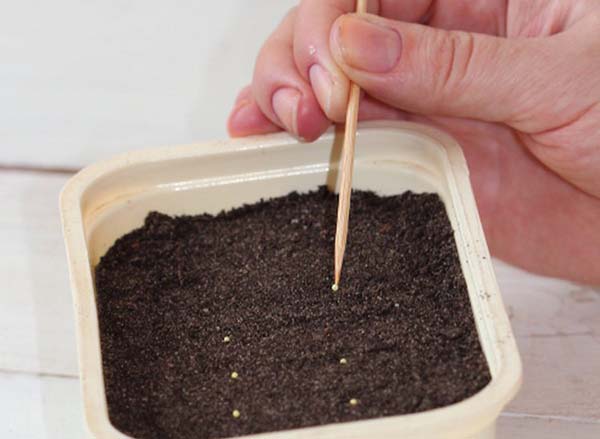
By the way!You can sow lisianthus seeds in a more standard way - just by scattering the seeds over the surface of the soil.
Or you can do the following:
- Make very shallow grooves 2-3 mm deep and 2-3 cm apart.
- Spread the seeds into grooves at a distance of 1-1.5 cm from each other (for example, with a slightly moistened toothpick).
- It is very easy (1-2 mm) to sprinkle the grooves with seeds with dry river sand, while the seeds should look through the sand.
Important! Dusting the seeds lightly with river sand will prevent the development of black leg... But it is impossible to deeply deepen, otherwise they will not rise.
- Moisturize from a spray bottle (especially, you need to spray the seeds so that the shell becomes acidic).
- Cover with glass, cling film or a bag to create a greenhouse effect, i.e. a mini greenhouse (high humidity will help the seeds germinate faster).
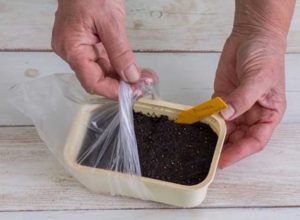
- Place in warm and, pay attention, bright place, where the optimum temperature for seed germination is kept in the region of + 21-24 degrees (according to other sources, + 20-25 degrees).
Video: 2 ways of sowing eustoma seeds for seedlings
By the way! It's even easier to grow eustoma in peat tablets... Before transshipment, the leaving process is similar, except that additional feeding is not required, but after that it is quite desirable.
Advice! You can see the process sowing petunia seeds in peat tablets (for eustoma everything is the same).
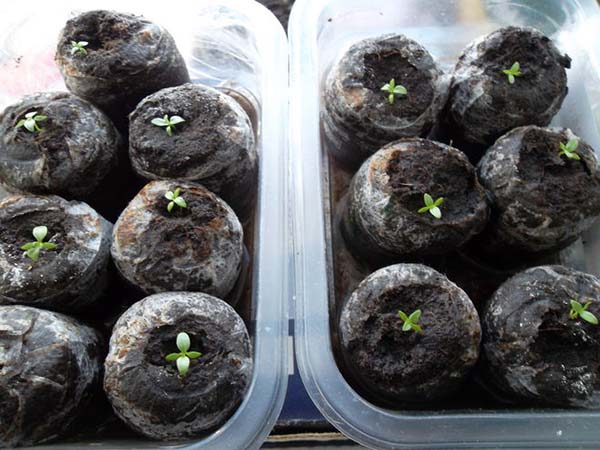
How to care for eustoma seedlings after sowing: maintenance conditions and care rules
Before the first shoots appear, all that is required of you is to monitor the soil moisture and periodically ventilate the containers, removing the cover for a short time.
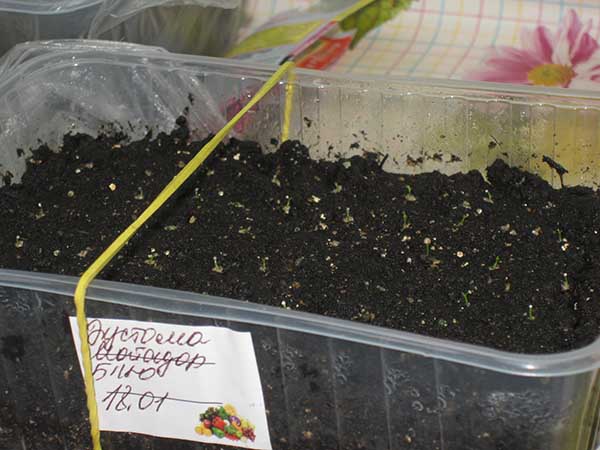
When you see friendly shoots (this usually takes no more than 10-20 days), the shelter will need to be promptly removed, and the container itself will be rearranged to a cooler and brighter placewhere daytime temperature keeps within + 18-22 degrees (but not higher than +24), a at night falls not lower than +15 degreesin, (optimally + 16-18 degrees).
Optimal daylight hours - 12-16 hours (average 14 hours), which means that at first (December-March) you will need supplement seedlings with phytolamps or full spectrum LED lamps.
Watering
Correct and timely watering is the key to getting healthy eustoma seedlings. As always, overflow (waterlogging) or drying out of the soil is not allowed. It is desirable that the soil in the containers is always moderately moist. Wherein you need to water from a small watering can, syringe or rubber enema (on the edge), not from the sprayer.
Important! To protect eustoma from black leg and other fungal diseases periodically water your seedlings with a solution Fitosporin.
Picking
When the eustoma appears on 3-4 real leavesandheight plants will reach 1.5-2 cm (this is normal), and this, as a rule, goes away from 6 to 8 weeks from sowing, it is necessary to carry out the first pick of Lisianthus.
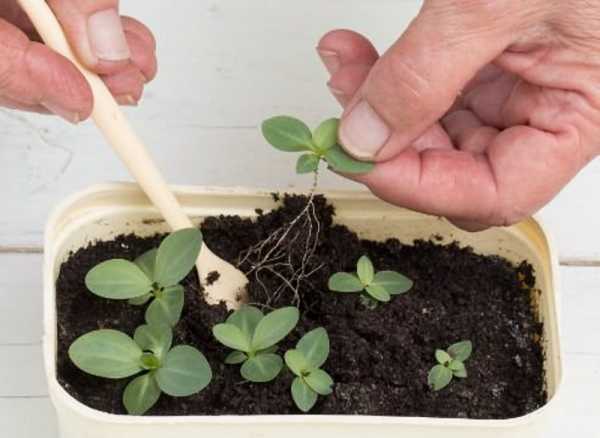
Itself eustoma picking technique standard: the day before transplanting, be sure to moisten the soil so that the seedlings can be easily removed from the soil with tweezers or a stick, and transfer them to new deeper containers, for example, cups, where you make small indentations in advance.
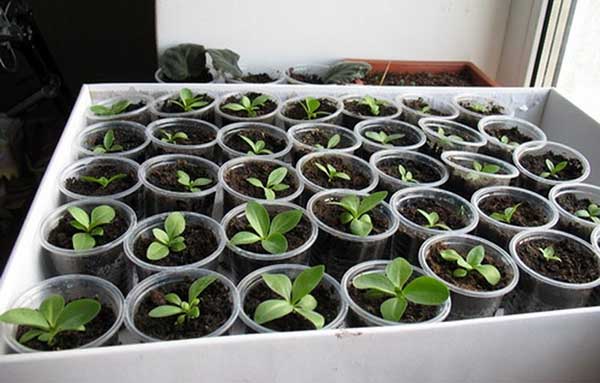
Note! Do not overexpose lisianthus in a flat containersince at the initial stage, the plant has very active development of the root system. Therefore, if it grows strongly and during a pick we damage the roots of the eustoma, then this will noticeably slow down the development of the plant.
Video: picking eustoma seedlings and caring for further care of seedlings
Advice! If you initially unpack the eustoma seedlings into individual rather deep containers (200 ml, not 100), then further transshipment will not be required.
However! Some experienced flower growers recommend that when growing eustoma from seeds, proceed as follows (so as not to damage the root system, which makes the flowering moment recede): immediately sow the seeds in separate containers, and then just transfer the grown seedlings into larger pots.
Top dressing
Immediately after the pickso that the plant grows faster and adapts to a new place, it should water with any rooting stimulant, for example, Kornevin's solution, Heteroauxin or another similar agent (such as Epin or Zircon).
Eustoma is very loves calcium supplements (the less calcium in the soil, the more acidic it is) and it is the neutral soil.
Therefore, 7-10 days after the pick, you can carry out the first full dressing with calcium fertilizer, for example, calcium nitrate according to the instructions (dilute about 2 grams per 1 liter of water).
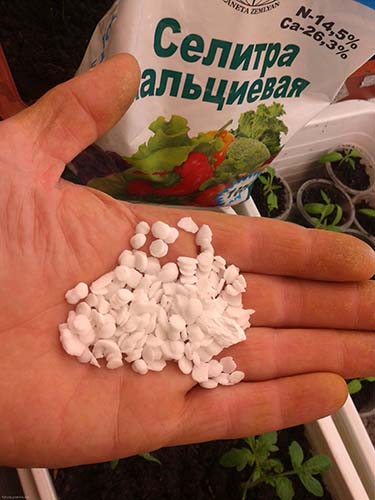
Also for the development of the root system very effective to water the plant with fertilizers with humic acids, eg, Potassium humate.
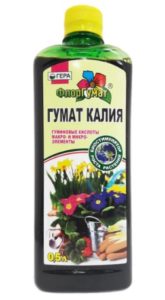
And then it's worth spending regular (every week or two) feeding complex mineral fertilizer with a high nitrogen content.
Already directly before flowering (planting in open ground) it is worth starting to use complex fertilizers with a high content potassium and phosphorus (more potassium).
Transshipment
When the seedlings have 6-8 true leaves, they should be transplanted into larger containers, for example, 0.5 liter glasses or pots.
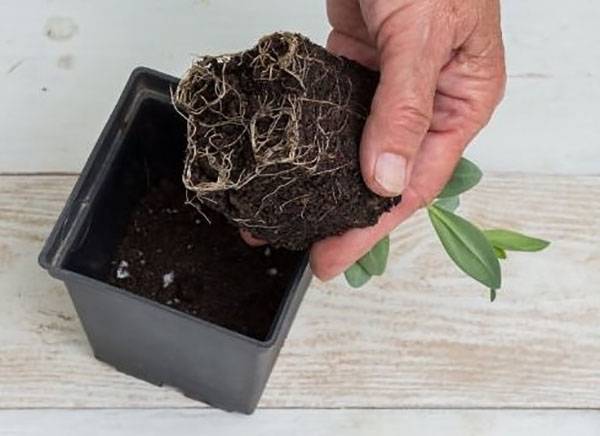
Further care for the plant before planting is similar: monitor the moisture content of the soil, watering as it dries and do not forget to regularly feed the lisianthus seedlings according to the recommendations given above.
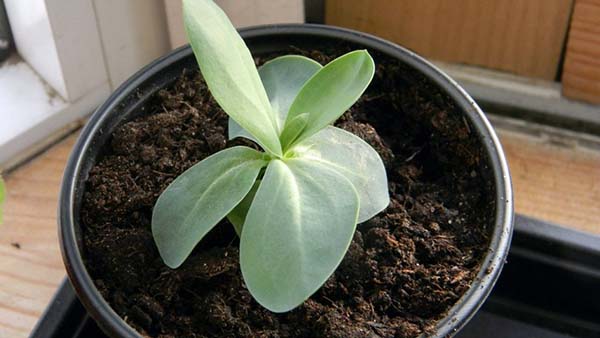
Interesting! You can transfer the eustoma seedlings into large pots to take them outside in the summer, and take them to the greenhouse and home in the fall, where they will continue to bloom even after the temperature drops.
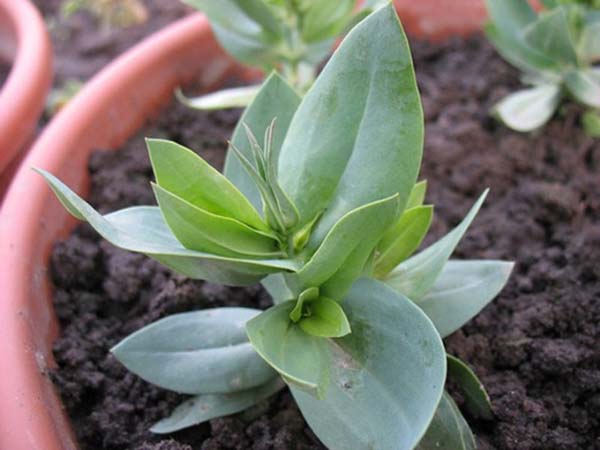
When and how to plant eustoma seedlings in open ground on a flower bed
Note! More about the timing of planting lisianthus seedlings in the garden and the rules for further care in the open field read in this separate article.
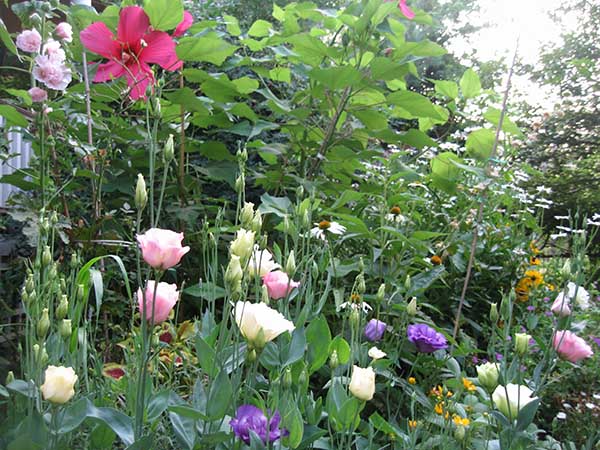
Growing an eustoma from seed takes a lot of patience as the plant grows very slowly. However, it's worth it. Lisianthus blooms simply magnificently, meeting all your expectations and labor costs.The main thing is to fulfill all the requirements of eustoma for its cultivation and care during the seedling period.
Video: eustoma (Irish rose) - growing from seeds

